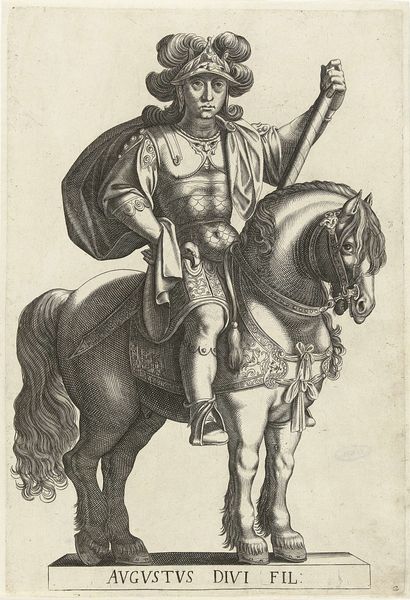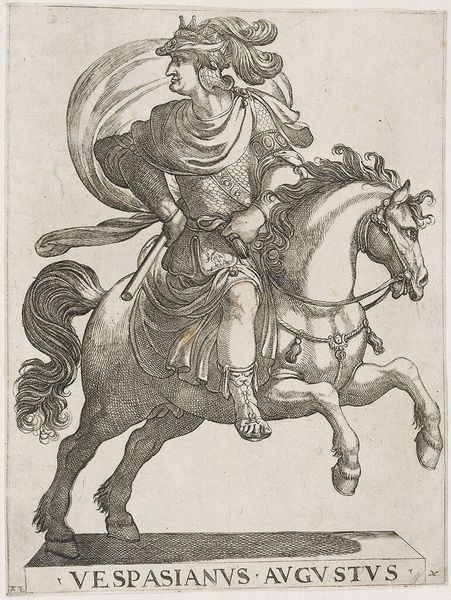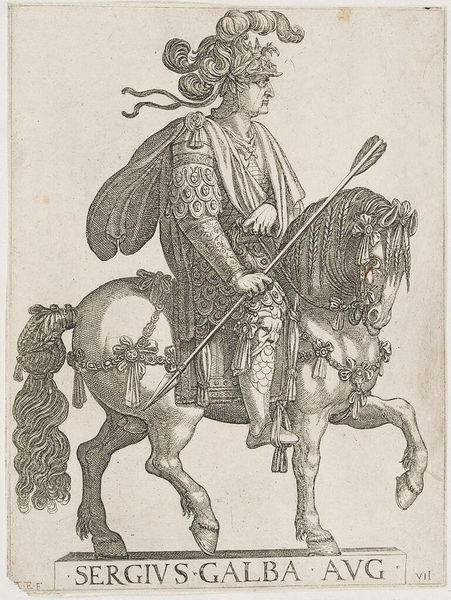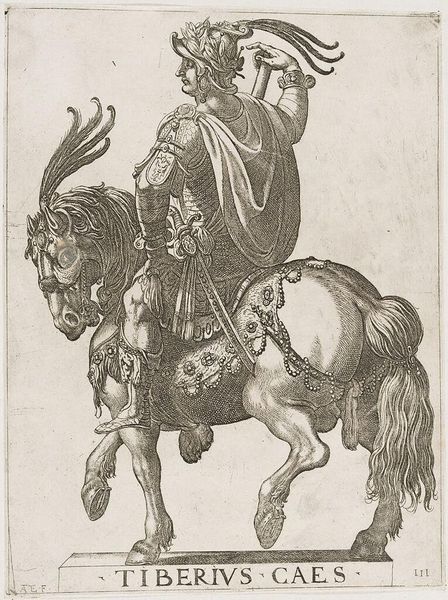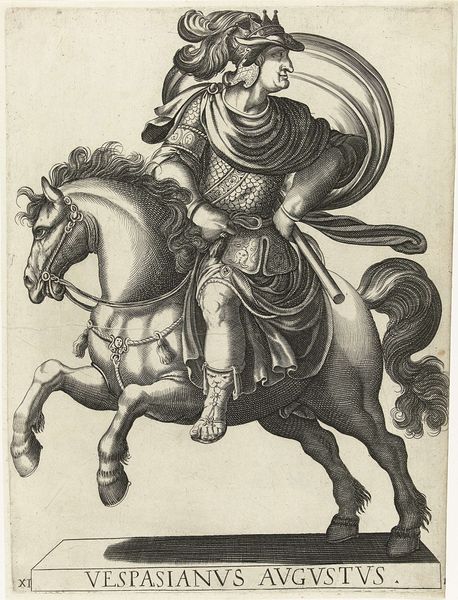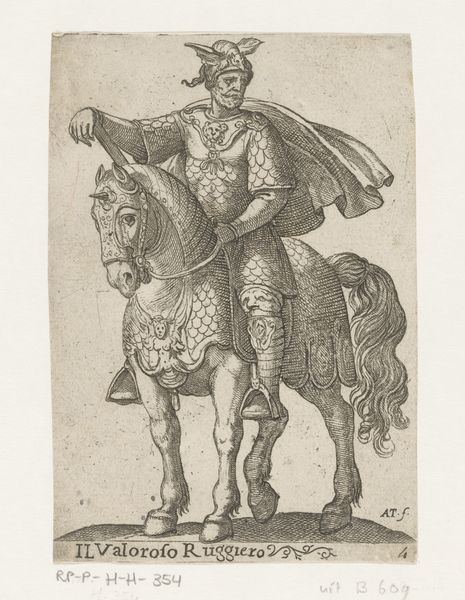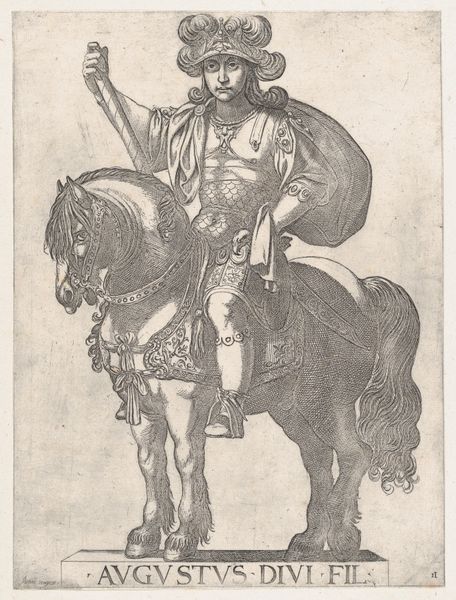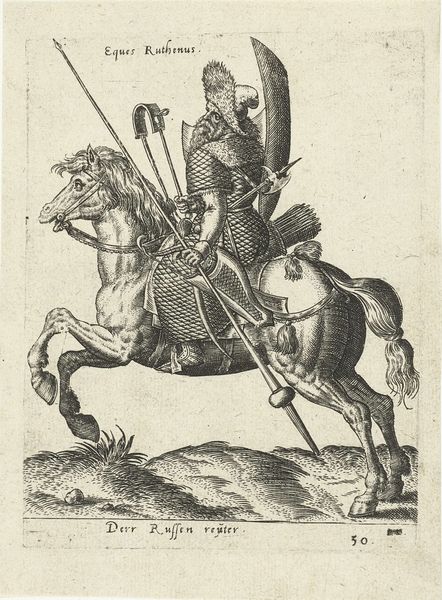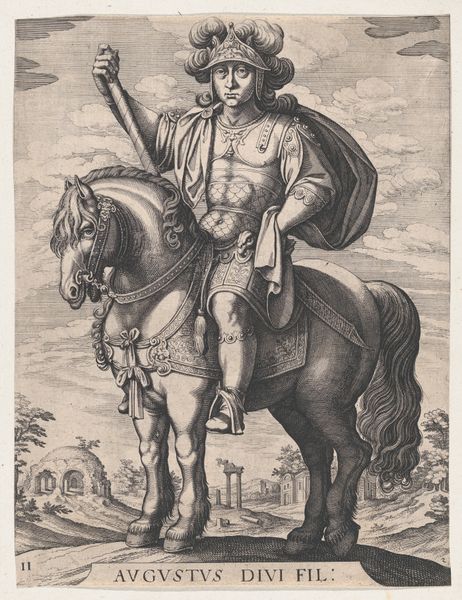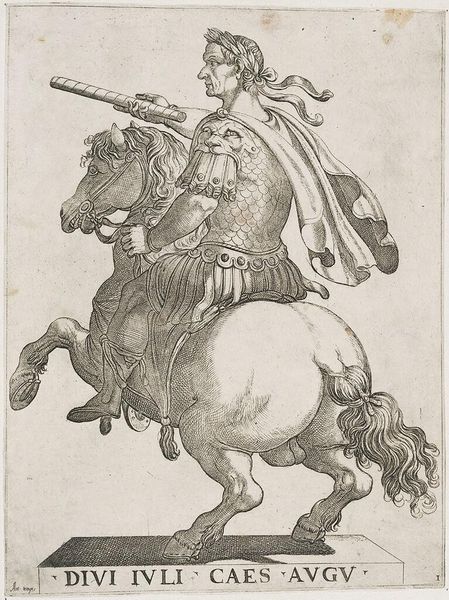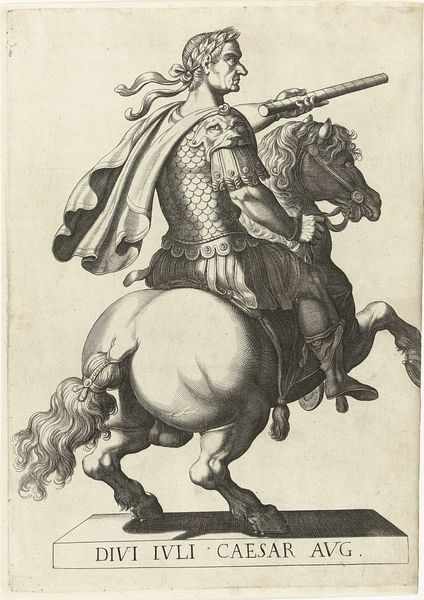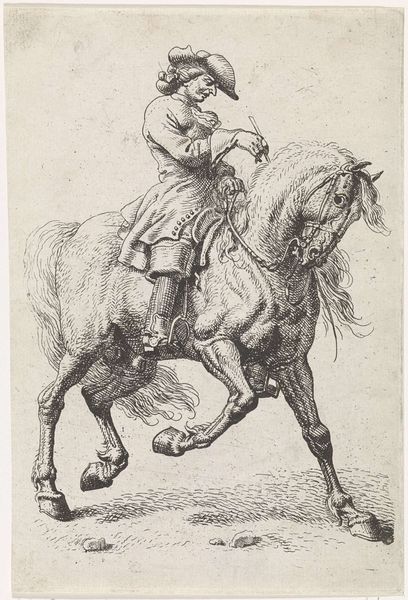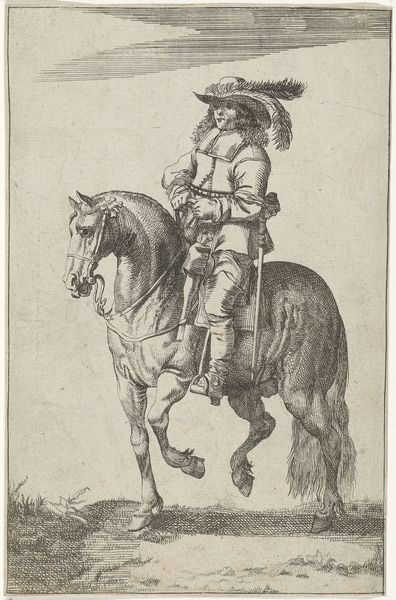
Dimensions: 30.5 x 22.5 cm (12 x 8 7/8 in.)
Copyright: CC0 1.0
Editor: This is Antonio Tempesta's "Emperor Augustus on Horseback," made in the late 16th or early 17th century. There's an almost theatrical quality to Augustus's pose. What symbols do you find particularly striking in this image? Curator: Note Augustus's raised hand, holding a baton, his gaze directed forward. This stance embodies leadership, progress, and the will to advance the empire. How does this imagery reflect Rome's cultural memory of Augustus? Editor: It makes him feel less like a person and more like a symbol of power. Curator: Exactly. The horse itself—a powerful, controlled animal—is another ancient symbol, connoting status, courage, and military might, echoing across centuries of Roman art and beyond. What remains consistent through history? Editor: Visual representations of power often rely on similar symbolic language. It's amazing to see how those symbols persist. Curator: Indeed. Visuals help to carry complex ideas across generations.
Comments
No comments
Be the first to comment and join the conversation on the ultimate creative platform.
